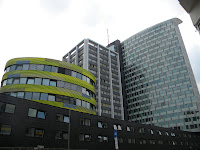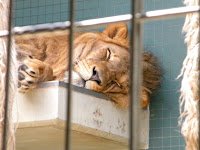








Cheech and Chong



 the very delicious "doner kebap"
the very delicious "doner kebap" getting ready for the world cup
getting ready for the world cupI will miss you Berlin... until we meet again.

 The second memorial that I found interesting was the Soviet War Memorial at Treptow Park. This memorial symbolizes five thousand of the eighty thousand soldiers of the Red Army who fell in the Battle of Berlin in 1945. The Soviets defeated the Nazi regime and occupied East Berlin for many years under the name the German Democratic Republic (GDR). All of the GDR's monuments "were in the minds of Berliners not just a political statement but also a neighborhood icon, a repository of memories, or a vital piece of urban architecture." Postwar West Germany had "buried and denied its Nazi past", a mistake that would be repeated if all of the GDR's monuments were wiped away. So I felt that it was wise for them to keep the Soviet War Memorial.
The second memorial that I found interesting was the Soviet War Memorial at Treptow Park. This memorial symbolizes five thousand of the eighty thousand soldiers of the Red Army who fell in the Battle of Berlin in 1945. The Soviets defeated the Nazi regime and occupied East Berlin for many years under the name the German Democratic Republic (GDR). All of the GDR's monuments "were in the minds of Berliners not just a political statement but also a neighborhood icon, a repository of memories, or a vital piece of urban architecture." Postwar West Germany had "buried and denied its Nazi past", a mistake that would be repeated if all of the GDR's monuments were wiped away. So I felt that it was wise for them to keep the Soviet War Memorial.  Here, visitors pass through an expansive landscape of granite memorial sculptures until they reach a 38 foot tall statue of a soldier holding a sword in one hand, a child in the other, and stepping on a swastika, "a grand expression of heroism and triumph." It is regarded as the best and main Soviet memorial in existence in Germany.
Here, visitors pass through an expansive landscape of granite memorial sculptures until they reach a 38 foot tall statue of a soldier holding a sword in one hand, a child in the other, and stepping on a swastika, "a grand expression of heroism and triumph." It is regarded as the best and main Soviet memorial in existence in Germany. (Frank Gehry's DG Bank)
(Frank Gehry's DG Bank)



 Within Coop's Cinema, it felt as if there was a lot of wasted space and also felt cramped in the lobby area. It was very non-photogenic to say the least, but that's just my opinion.
Within Coop's Cinema, it felt as if there was a lot of wasted space and also felt cramped in the lobby area. It was very non-photogenic to say the least, but that's just my opinion.





 The Berlin Zoological Garden is the oldest zoo in Germany. It was opened in 1844 and houses almost 1500 different species and 16000 animals. The zoo spreads across 86 acres and has an aquarium, which house 9000 sea creatures and reptiles within its three stories.
The Berlin Zoological Garden is the oldest zoo in Germany. It was opened in 1844 and houses almost 1500 different species and 16000 animals. The zoo spreads across 86 acres and has an aquarium, which house 9000 sea creatures and reptiles within its three stories.


 It is considered to be the most visited zoo in Europe. It was reported that 3 million visitors came to the zoo in 2009.
It is considered to be the most visited zoo in Europe. It was reported that 3 million visitors came to the zoo in 2009.











 However, the cascading waterfall was a nice touch.
However, the cascading waterfall was a nice touch.
 Some interior shots.
Some interior shots.

 Even though it had a pink paint job, the 944 Turbo is still my favorite Porsche.
Even though it had a pink paint job, the 944 Turbo is still my favorite Porsche. The very first Carrera GT ever produced.
The very first Carrera GT ever produced.